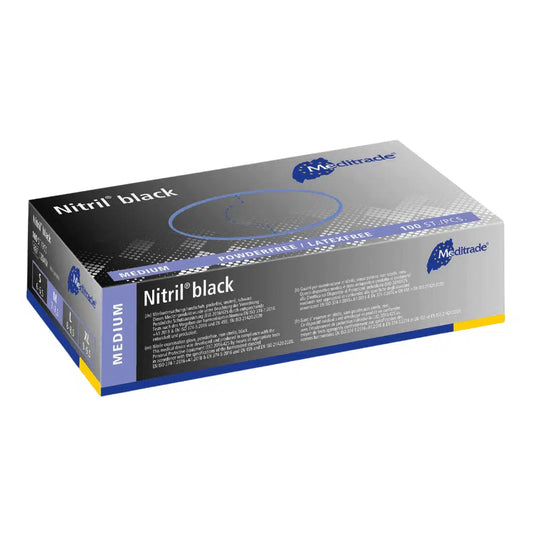
Yoga - Association of Body and Spirit
The World Yoga Day, also known as an international yoga day, is celebrated every year on June 21. This day was launched by the United Nations in 2014. Do you regularly immerse yourself in the world of yoga? Would you like to find out whether yoga is an option for you? Then stay tuned and read on.
Mostness for the introduction of the World Yoga Day:
- Promotion of yoga worldwide: The World Yoga Day is intended to promote awareness of the many advantages of yoga, including physical, mental and intellectual aspects. Yoga is seen as a holistic practice that supports physical well -being, mental clarity and spiritual balance.
- Health promotion: Yoga is known for its positive effects on health, including improving flexibility, strengthening muscles, promoting blood circulation and supporting mental health through stress reduction and promoting mindfulness.
- International understanding: Yoga is a practice that connects cultures and countries. The World Yoga Day offers a platform to emphasize the unity and harmony and to promote intercultural dialogue.
- Peace promotion: The practice of yoga can achieve a feeling of peace and calm, which contributes to a more peaceful world. Yoga teaches tolerance, patience and compassion, values that are of great importance in today's globalized world.
The World Yoga Day is celebrated worldwide with various events, including mass yoga meetings, workshops, meditations and lectures. These activities aim to encourage people of all ages and origin, to integrate yoga's practice into their daily life and to enjoy the numerous advantages.

Yoga in numbers
About every fifth person practiced yoga in 2023. This was the result of a representative study by Professional association of yoga teachers in Germany. Yoga is particularly trendy in young adults, so that about 17% of men and 22% of women practice such.
| Age group | Men (in millions) | Women (in millions) |
|---|---|---|
| 20-29 | 1.2 | 2.5 |
| 30-39 | 1.5 | 3.0 |
| 40-49 | 1.0 | 2.0 |
| 50-59 | 0.8 | 1.5 |
| 60-69 | 0.5 | 1.0 |
What does it mean to practice yoga?
Yoga is an ancient practice that has its origin in India and includes both physical and intellectual exercises. The term "yoga" comes from the Sanskrit and means "association" or "integration". It is about bringing body, mind and soul into harmony.
Physical exercises (Asanas):
- Asanas are postures that aim to improve flexibility, strength and balance. Each attitude has specific advantages for the body and contributes to general health and well -being.
Breathing control (Pranayama):
- Pranayama refers to the control and regulation of the breath. Due to various breathing techniques, life energy (prana) can be controlled and increased in the body. This helps to calm the mind and revitalize the body.
Meditation (Dhyana):
- Meditation is a central component of yoga and serves to focus the mind and find inner peace. Regular meditation promotes mental clarity, emotional stability and a feeling of inner calm.
Ethical principles:
- Yoga also teaches ethical principles that are known as yamas (rules of conduct compared to others) and Niyamas (rules of conduct towards themselves). These principles promote virtues such as violence, honesty, purity and discipline.
What effect does yoga have on us?
Physical effects:
- Improved flexibility: Regular practice of yoga increases the flexibility of the muscles and joints.
- Strengthening the muscles: Yoga poses (Asanas) help to improve muscle strength, especially in core muscles, arms and legs.
- Improved posture: Yoga promotes a better posture by strengthening the back muscles and awareness of body orientation.
- Pain relief: Yoga can relieve chronic pain, especially in the lower back and in arthritis.
- Improved breathing: Breathing exercises (pranayama) improve the lung capacity and the efficiency of breathing.
- Cardiovascular health: Yoga can reduce blood pressure, improve blood circulation and strengthen the cardiovascular system.
- Weight management: Yoga can help you lose weight by stimulating the metabolism and promoting a healthy balance of body and mind.
Mental and emotional effects:
- Stress reduction: Yoga reduces the stress level through relaxation techniques and the promotion of mindfulness.
- Improved mental clarity: Meditation and breathing exercises help to calm the mind and improve the concentration.
- Emotional stability: Yoga promotes emotional balance and helps to deal with fear and depression.
- Increased mindfulness: Due to the practice of mindfulness, yoga helps to live at the present moment and to deal with yourself and others more consciously.
- Better sleep: Regular yoga can lead to a deeper and more relaxing sleep.
Spiritual effects:
- Increase in consciousness: Yoga can help develop a higher consciousness and a deeper connection to your own self and the environment.
- Inner calm and peace: Through meditation and mindfulness techniques, yoga conveys a feeling of inner peace and serenity.
- Improved concentration: Yoga helps to focus the mind and increase mental clarity.
Long -term health effects:
- Strengthening the immune system: Regular yoga practice can strengthen the immune system and increase resilience to diseases.
- Slowing the aging process: Yoga can slow down the aging process by keeping the body young and flexible and promoting mental health.
- Improved quality of life: Overall, yoga contributes to a better quality of life by promoting physical well -being, mental clarity and emotional stability.
Scientific support:
Many of these effects of yoga are supported by scientific studies. For example, research has shown that yoga is responsible for reducing stress hormones and can improve the quality of sleep. In addition, were Pain states In relation to neck and back pain, as well as anxiety, declining under the practice of yoga. Finally, an improvement in heart health And found an increase in general life satisfaction.

Yoga species
There are many different types of yoga that differ in their techniques, focus and philosophies. Here are some of the most famous yoga styles:
Hatha yoga
Hatha Yoga is one of the best known and most traditional forms of yoga. It focuses on physical exercises (asanas) and breathing techniques (Pranayama). Hatha yoga is often slower and less intense, ideal for beginners.
Vinyasa yoga
Vinyasa Yoga, also known as Flow Yoga, combines breath and movement into a flowing sequence of Poznan. It is more dynamic than Hatha yoga and often faster, with the transitions between the poses fluid.
Ashtanga yoga
Ashtanga Yoga is a very structured and physically demanding form of yoga. This is followed by a fixed sequence of poses that are carried out in a certain order. It emphasizes strength, flexibility and endurance.
Iyengar yoga
Iyengar Yoga attaches great importance to precision and correct alignment of the posture. Aids such as blocks, straps and ceilings are often used to support the poses and make it accessible to all body shapes and skills.
Bikram Yoga
Bikram Yoga, also known as Hot Yoga, consists of a fixed series of 26 Poznan, which is practiced in a room heated to 40 ° C. The goal is to increase flexibility through the heat and to promote detoxification.
Kundalini Yoga
Kundalini Yoga combines dynamic movements, breathing techniques, meditation and mantras to awaken and channel the energy in the body. It is spiritual and energetically oriented and aims to expand awareness.
Yin Yoga
Yin Yoga is a calm and meditative form of yoga, in which poses are kept longer, often between three and five minutes. It aims to stretch the deep connective tissue and improve flexibility, as well as to promote inner calm.
Restorative yoga
Restorative yoga focuses on relaxation and relaxation. It uses aids such as bolster, blankets and blocks to support the body in passive poses and enable deep relaxation.
Power yoga
Power Yoga is a powerful and dynamic form of Vinyasa Yoga, which takes over elements of Ashtanga Yoga. It aims to improve strength and flexibility and is often more intense and physically challenging.
Jivamukti Yoga
Jivamukti Yoga is a modern form of yoga that integrates physical, spiritual and ethical practices. It combines asanas, music, singing, meditation and philosophical teachings and emphasizes the connection between yoga and social engagement.
Sivananda yoga
Sivananda Yoga is based on the teachings of Swami Sivananda and includes a fixed sequence of twelve basics, breathing exercises, relaxation, vegetarian nutrition, positive thinking and meditation.
Anusara yoga
Anusara Yoga combines a heart -open philosophy with a precise orientation in the poses. It attaches great importance to the orientation of the body and the internal attitude of the practitioner.
Each of these yoga styles offers unique advantages and can be selected depending on the individual needs and preferences. Regardless of whether you are looking for physical fitness, mental clarity, spiritual development or relaxation, there is a yoga practice that fits.

Where can I practice yoga?
The environment for yoga can have a significant impact on practice and experience. Here are different environments that are ideal for yoga:
Yoga studios
- Professional environment: Yoga studios are specifically equipped to offer a suitable environment for yoga. They have all the necessary aids such as mats, blocks, belts and ceilings.
- Course variety: Studios often offer a variety of courses for different levels and styles.
Natural environments
- Parks: Yoga in the park offers fresh air and natural noises that can contribute to relaxation.
- beaches: The proximity to the water and the sound of the waves can have a calming effect.
- Mountains/forests: These environments offer a calm and secluded atmosphere that is ideal for deeper meditation and relaxation.
At home
- Convenience: Yoga at home enables flexibility in terms of time and place. It is ideal for daily practice and for people who prefer a private space. Here you have the opportunity to wake your senses with candles and scents.
- personalization: You can design the room according to your own preferences and use personal aids.
Yoga retreats and resorts
- Specially designed environments: Retreats and resorts are often located in beautiful, quiet environments, such as by the sea or in the mountains, and offer a distraction -free zone.
- Comprehensive experience: These places often offer extensive programs, including healthy nutrition, wellness treatments and guided meditations.
Community centers
- Access for everyone: Community centers often offer inexpensive or free yoga classes and promote the community.
- Accessibility: These centers are often easily accessible and are located in residential areas.
Office/business premises
- Workplace wellness: Many companies offer yoga classes at the workplace to promote the well-being of employees.
- Small breaks: Short yoga meetings can help reduce stress and improve concentration.
Fitness studios
- Diverse offers: Fitness studios often offer yoga courses alongside other fitness activities, which enables a varied training routine.
- equipment: Fitness studios often have the necessary equipment and offer comfortable facilities.
Cultural centers and spiritual centers
- Spirituality and tradition: These centers often offer yoga classes that are closely linked to spiritual and cultural practices.
- Quiet atmosphere: They offer a calm and respectful environment that is ideal for meditation and spiritual development.
Online environments
- accessibility: Online platforms enable yoga classes to follow from anywhere, which became particularly popular during the Covid 19 pandemic.
- flexibility: They offer flexibility in terms of time and course choice, with a variety of available styles and levels.
Important aspects for a suitable yoga environment:
- rest and peace: A calm environment helps to concentrate and immerse yourself in the practice.
- cleanliness and tidiness: A clean and well organized environment promotes well -being and concentration.
- Natural lighting: Natural light can improve the mood and create a relaxed atmosphere.
- Pleasant temperature: The temperature should neither be too hot nor too cold to ensure comfort during practice.
- Place: Sufficient space for movements and expansion is important to avoid injuries and enable effective practice.
- Scent: Depending on the individual mood, both soothing and invigorating Space fragrances or fragrance oils are used to set olfactory stimuli.
The choice of the environment depends on personal preferences and needs, but a suitable and well-designed environment can significantly improve and deepen yoga practice.

Events
There are a variety of yoga events that take place worldwide and cover various aspects of yoga practice. Here are some of the best-known types of yoga events:
Yoga festivals
Yoga festivals are big events that often last several days and offer a wide range of yoga styles, workshops, lectures and activities. Examples are:
- Wanderlust Festival: An international yoga festival combines yoga, music and nature.
- Yoga Journal Conference: Offers a variety of workshops and classes with well-known yoga teachers.
- Balispirit Festival: A festival in Indonesia that combines yoga, music, dance and healing art.
Yoga conferences
Yoga conferences are professional events that focus on the exchange of knowledge and research on yoga. They offer lectures, workshops and networking opportunities for yoga teachers and practitioners.
Yoga retreats
Yoga retreats are intensive, often multi-day programs that take place in relaxing environments, such as in resorts, on the beach or in the mountains. These events offer an opportunity to dive deeply into yoga practice and to recover. Examples are:
Yoga workshops
Yoga workshops are specialized classes that focus on certain aspects of yoga practice, such as Asanas, Pranayama, meditation or yoga philosophy. They usually last a few hours to a whole day and offer a deeper insight into special topics.
Community yoga events
These events are often held in public parks, beaches or community centers and are free or inexpensive. They aim to make yoga more accessible and strengthen the community.
Online yoga events
With the increasing popularity of online platforms, many yoga teachers and studios offer online courses, workshops and retreats. These enable the participants to take part in yoga events from home.
Yoga competitions
Although less common, there are also yoga competitions in which practitioners demonstrate their skills in various asanas. However, these competitions emphasize discipline and technology rather than the idea of competitive.
Measure yoga and wellness
These trade fairs combine yoga classes with exhibitions of products and services related to wellness, health and fitness. They offer a great opportunity to discover new trends and products in the yoga area.
Yoga charity events
These events combine yoga with non -profit purposes and collect donations for various charitable organizations. Examples are yogathons or special yoga classes, the proceeds of which are donated.
Specialized yoga events
There are also specialized yoga events that focus on certain target groups, such as:
- Pre- and Postnatal Yoga workshops: For expectant and new mothers.
- Children yoga camps: Yoga classes and activities especially for children.
- Senior Yoga Sessions: Adapted yoga classes for older people.
These events offer diverse opportunities for yoga practitioners of all levels and interests to deepen their practice and to network with other yoga enthusiasts. Yoga is therefore a holistic practice that has positive effects on all aspects of human existence and is an effective means of promoting health and well -being.






























